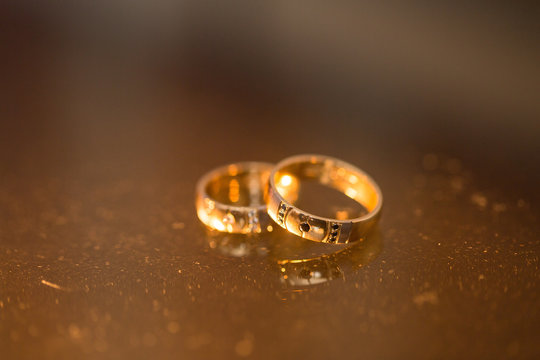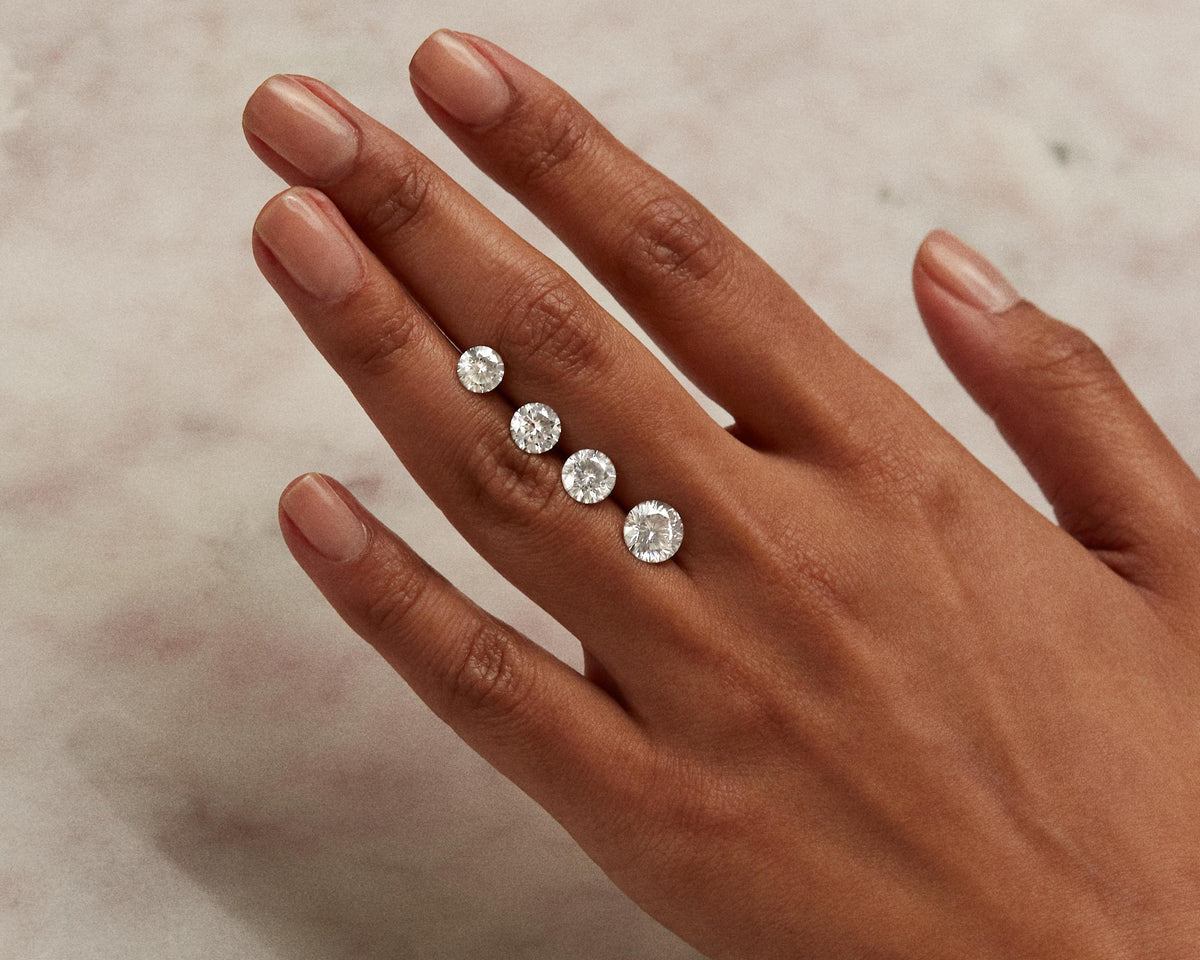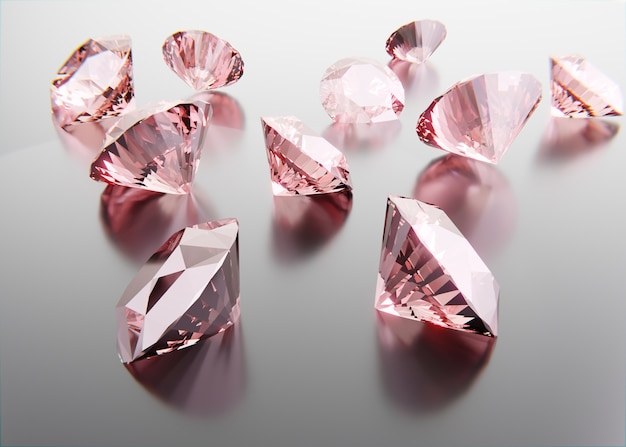
When choosing a lab diamond ring, one of the most important decisions you’ll need to make is the metal for the band. The two most popular options are platinum and gold, each offering its own unique benefits and aesthetic appeal. In this article, we will compare lab diamond rings in platinum vs gold to help you determine which metal is the best choice for your engagement ring or other special jewelry.
What is the Difference Between Platinum and Gold in Lab Diamond Rings?
When considering lab diamond rings platinum vs gold, it’s essential to understand the fundamental differences between these metals. Platinum is a dense, naturally white metal that is known for its durability and hypoallergenic properties. On the other hand, gold is a softer metal that comes in various colors, with yellow, white, and rose gold being the most common options for lab diamond rings.
Platinum is often seen as the more luxurious option due to its rarity and weight. It is a naturally white metal that does not require plating to maintain its color, making it an excellent choice for those who want a consistent, timeless look. Gold, on the other hand, offers more variety in terms of color and is generally more affordable than platinum, making it an attractive option for many buyers.
Durability of Lab Diamond Rings: Platinum vs Gold
When comparing the durability of lab diamond rings platinum vs gold, platinum is typically the stronger and more durable option. Platinum is a dense metal, which means it is less likely to scratch or wear down over time. Because of its durability, platinum is often favored for engagement rings, which are worn daily and subjected to constant wear and tear.
Gold, especially when it’s in its purest form (24-karat), is a softer metal. While 18-karat and 14-karat gold are commonly used in jewelry for added strength, gold is still more prone to scratching and denting compared to platinum. If you’re looking for a ring that will retain its pristine condition over many years, platinum may be the better choice. However, gold can still be a durable option, particularly when alloyed with other metals like copper or silver.
Aesthetic Appeal of Lab Diamond Rings: Platinum vs Gold
In the debate of lab diamond rings platinum vs gold, the aesthetic appeal of the metal plays a significant role in the decision-making process. Platinum is a naturally white metal that provides a sleek, modern look. The high-polish finish of platinum complements the sparkle of lab diamonds, making it a popular choice for those who prefer a minimalist or contemporary style.
Gold, on the other hand, offers more versatility in terms of color and warmth. Yellow gold has a classic, timeless appeal that many people associate with vintage or traditional styles. White gold, which is plated with rhodium, provides a similar look to platinum but with a slightly different shine and feel. Rose gold has become increasingly popular in recent years, offering a romantic and vintage-inspired aesthetic with its warm pink hue. Ultimately, the choice between platinum and gold will depend on your personal style and the type of look you want for your lab diamond ring.
Cost Considerations: Lab Diamond Rings Platinum vs Gold
One of the most significant factors in the decision between lab diamond rings platinum vs gold is the price. Platinum is typically more expensive than gold, mainly due to its rarity and the density of the metal. Platinum rings also require more metal to create, which can further increase the cost. If you have a larger budget and want a ring that will last a lifetime with minimal maintenance, platinum is an excellent choice.
Gold, however, is generally more affordable than platinum, especially if you choose 14-karat or 18-karat gold. While gold is still a precious metal, its lower cost makes it an attractive option for couples who are looking to save money or who prefer to allocate their budget toward a larger or higher-quality lab diamond. Gold can also provide a wider range of options in terms of colors, allowing for more flexibility in choosing a style that fits your budget.
Maintenance of Lab Diamond Rings: Platinum vs Gold
When considering the maintenance of lab diamond rings platinum vs gold, platinum requires less upkeep over time. Because platinum is a dense, durable metal, it does not require regular replating or polishing to maintain its appearance. Over time, platinum may develop a natural patina, which many people find appealing as it adds character to the ring. However, if you prefer a high-polish look, you can have the ring polished to restore its original shine.
Gold, particularly white gold, requires more maintenance because it is typically plated with rhodium to maintain its shiny, white finish. Over time, the rhodium plating may wear off, necessitating re-plating to keep the ring looking its best. Yellow gold and rose gold do not require rhodium plating, but they may still require occasional polishing to maintain their shine. While gold is relatively low-maintenance compared to other metals, it may need more attention than platinum to keep it looking pristine.
Hypoallergenic Properties: Lab Diamond Rings Platinum vs Gold
For those with sensitive skin or allergies, hypoallergenic properties may be a crucial consideration when choosing between lab diamond rings platinum vs gold. Platinum is a hypoallergenic metal, meaning it is less likely to cause irritation or allergic reactions. This is particularly important for those with sensitive skin, as platinum’s purity and lack of alloys make it a safer option for prolonged wear.
Gold, especially in its higher karat forms like 24-karat gold, is also hypoallergenic. However, many gold rings are alloyed with other metals, such as nickel or copper, which can cause allergic reactions in some individuals. If you have a known sensitivity to certain metals, it’s essential to choose 18-karat or 22-karat gold, which contains less alloy and more pure gold, or to opt for platinum to avoid potential irritation.
Longevity and Resale Value of Lab Diamond Rings: Platinum vs Gold
When it comes to the longevity and resale value of lab diamond rings platinum vs gold, platinum tends to hold its value better over time. Platinum’s durability ensures that it will last for generations without significant wear, and its rarity makes it a highly sought-after metal. As a result, platinum rings tend to retain their value and may even appreciate over time.
Gold, while still a precious metal, does not hold its value as well as platinum. Gold’s price fluctuates with the market lab grown diamonds, and while it is still valuable, it may not retain its worth as consistently as platinum. However, gold rings can still be a solid investment, especially if you choose a high-karat gold option.
Conclusion: Lab Diamond Rings Platinum vs Gold – Which is Right for You?
Ultimately, the decision between lab diamond rings platinum vs gold depends on your personal preferences, budget, and lifestyle. Platinum offers a durable, hypoallergenic, and luxurious option for those willing to invest in a long-lasting, timeless piece of jewelry. If you prefer a more affordable option with a variety of colors and styles, gold may be the better choice for you.
Both metals are an excellent choice for lab diamond rings, and each offers unique benefits. Whether you choose platinum or gold, the most important factor is selecting a ring that resonates with your style and represents your love.


